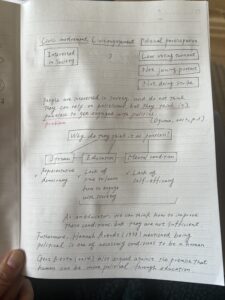I have thought about which method I should use for the final project. Since I belong to EFI, I wanted to find something creative, though I couldn’t have connected it with my awareness of the problem for a long time. However, once the core problem I wanted to tackle became clear, I finally had an image of using it. Furthermore, at the same time, I came up with an idea that I would use the Open Prototype which I experienced in Building Near Future.
What is the Open Prototype?
“OP is presented as conceptual and methodological framework for artistic practice and public participation that bridges the space between technology and society, and contributes to city and technology innovation (Hemment, 2020).”
“OP is an approach to developing and testing ideas, making ideas tangible, and allowing play to drive the exploration, so new possibilities can emerge untutored to specific constraints of production (Hemment, 2020).”
“OP is a means of testing and developing a concept or thing with various contributors and communities given agency at various stages of the process (Hemment, 2015).”
The reasons why young people in Japan have assumed “there is no point of getting engaged” or “they will make no change” toward society and politics, may be based on the interdisciplinary issues, such as the election system, the content taught through compulsory education, and recognition toward society and politics as massive things that is out of control. They are also probably intertwined with each other and for which no effective solution can be found in any single field alone (It is a literally wicked problem). Although The the details of the background will be analysed from each discipline in my literature review, I will try to utilise the Open Prototype to tackle the problem, bringing together young people working in different fields and letting them think freely about solutions in an interdisciplinary way and without difficult restrictions.
Furthermore, it is what I wanted because this method itself is supposed to give the participants a sense of agency, which means they would have some hope or courage of taking action toward better society and politics after the participation!


